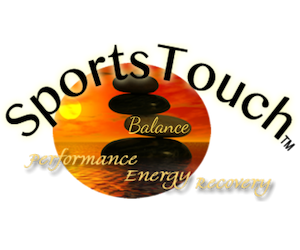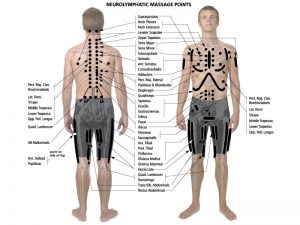Research Sports Touch
Applied Research
In 1984-1985 I embarked on a career path in Holistic Health and Sports Massage. Not knowing where it would take me, I embraced all that I learned and channeled it all into my first book, Sports Touch, the Athletic Ritual. This was 28 years of Applied Research with athletes of different sports trying these rituals and discovering for themselves what was physically possible.
In 1986, I was introduced to Touch for Health Kinesiology and it was a gift from heaven. I looked at all the techniques I was learning and began combining them into an Athletic Ritual. These steps the athlete would do before, during (if applicable), and after to enhance their ability to focus on the race, race without pain, or imbalance, and most importantly reap the benefits of an incredible recovery! Amazing feats of personal bests became reality in each race.
In the 28 years since I wrote Sports Touch, the techniques apply today as much as they did then. The system was tried and test many times over with the exact same results….No Pain but Plenty of Gain!
I gained more insights into the body’s incredible capacity to adapt, heal and recover while in a race. So for every athlete I watched, listened to, and wrote a ritual for, I gathered more insights as to what they needed to make it through a race.. but it was always about recovery.
Recovery is everything…the most essential part. The Sports Touch system gave the athlete total control over the outcome of the race. Preparing the body to race, then working on it as they raced, always helping the body to maintain its energy and strength, was the constant goal. They only had to focused on their body, the techniques in their Ritual, and when there was no pain, there was no loss of focus to attain their goal. This was the ‘Edge’ they needed to win. They didn’t think about anything else, only the race. The ‘Edge’ was full focus and concentration.
In Chapter 4 of Sports Touch, I speak about the ‘Key’ technique that an athlete does throughout the entire race. ‘Rubbing Points’. These are the neurolymphatic reflex points, Chapman’s Reflexes, discover by Frank Chapman, DO. This revelation in osteopathy went on to be used to diagnose and treat underlying disease in organs and glands as well as the corruption of the bony structure.
While in Touch for Health Kinesiology training, I was introduced to the neurolymphatic reflex points that were connected to the musculature by Dr. George Goodhearted, DC in the 1960’s. I knew what they did to drain the lymphatic vessels, so I thought about how this would help an athlete in a race. The goal was to keep the muscles free of congestion and remain functional without pain, which would speed up their recovery. One key focus was to keep rubbing these specific points because the minute you felt pain, is when you lost time.
And it worked and I saw many athletes achieve their dream race.
Here are the Neurolymphatic Reflex points as they relate to the muscles.
Proven Athletic Performance and Recovery
This lesser known use of accessing the lymph system through touch by applying deep massage to the neurolymphatic reflex (NLR) points has proven to improve athletic performance. Firm and deep massage of specific points on the body (especially in combination with contraction of related muscles) causes the lymph to flush out waste by-products more swiftly.
This physical phenomenon helps improve performance in sporting events by providing a constant flushing of metabolic byproducts along with the efficient moving of cellular energetics and key signaling molecules as muscles contract.
For example, one key metabolic byproduct produced during exercise is lactic acid. The old school of thought was that when lactic acid accumulated in your muscles it released into the bloodstream and hindered performance by directly leading to muscle fatigue and soreness while slowing muscle recovery.
Scientists now know that is far from being the whole story. Recent scientific discovery now indicates that lactic acid and lactate are among the body’s preferred fuels for exercise performance. While more research on the mechanism of action of massaging the NLR points is needed, it appears that deep self-massage of the NLR points has an effect on the acceleration of waste by-products, that will help to increase the flow of performance enhancing nutrients via pleiotropic (influencing multiple gene/metabolic pathways) effects which include metabolism, pH, fuel selection, hormonal influence, neuromuscular processes, timing and cell signaling. These are all key systems that are essential to maintaining powerful well-timed muscle contractions.
Consistent rubbing of the NLR points will help to maintain optimal power and endurance while reducing fatigue and pain.
THE NEUROLYMPHATIC REFLEXES ARE THE KEY TO PERFORMANCE AND ACCELERATED RECOVERY!
BENEFITS
Increased Performance = Maximum Performance Potential
Injury Prevention
Shortened Recovery Time
Increased Strength
Increased Speed
Increased Endurance and Stamina
Increased Focus and Concentration
Increased Circulation
Increased Lymph Drainage
Increased Oxygenation
Reduced damage to the muscles
Avoid Muscle Compensation
Reduced Fatigue
Reduced Pain
A Happy, Winning Recovered Athlete!

